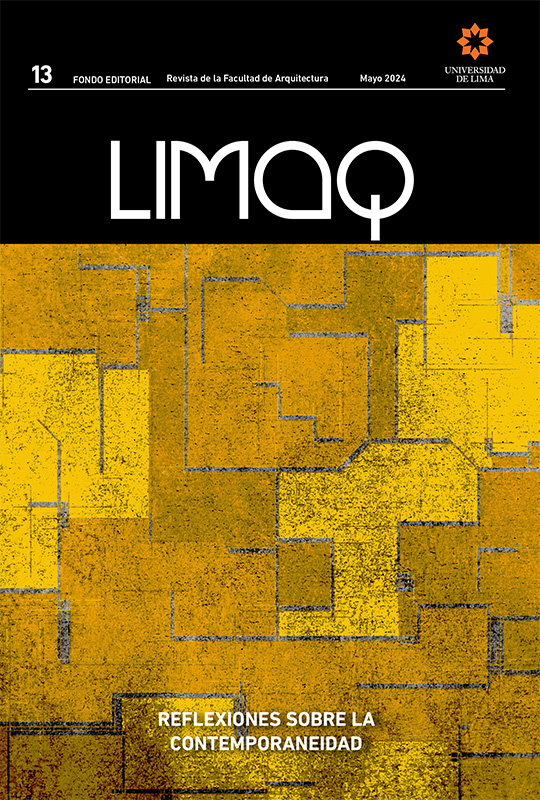To render visible: the contribution of forensic architecture to the reading of contemporary events and the Latin American experience
DOI:
https://doi.org/10.26439/limaq2024.n013.6582Keywords:
forensic architecture, aesthetics, image, vigilance, violenceAbstract
This article analyzes the work of the Forensic Architecture agency to understand how architecture can be a crucial tool for interpreting contemporary events and how this practice integrates into the Latin American context. To achieve this, it presents the theoretical framework at the basis of the group's work, supported
by Guilherme Wisnik's concept of nevoeiro (‘fog’) and the issues of truth, image, and surveillance in contemporary society. Through theoretical analysis and case studies, the article seeks to define forensic architecture as a methodology capable of navigating through the contemporary fog and taking effective action by creating a new epistemology that connects various areas of knowledge to counter state violence. Finally, it examines the emerging languages of forensic architecture in Latin America, with the emergence
of new agencies that approach the practice from different needs and perspectives.
Downloads
References
Agencia autónoma. (s. f.). Memória da Terra. https://memoriadaterra.org/
Baudrillard, J. (1991). Simulacros e simulação (M. da Costa, Trad.). Relógio d’Água.
Collins, P. H. (2019). Intersectionality as Critical Social Theory. Duke University Press.
Didi-Huberman, G. (1998). O que vemos, o que nos olha. Editora 34.
Fórum Brasileiro de Segurança Pública. (2022). Anuário Brasileiro de Segurança Pública 2022: Letalidade policial cai, mas mortalidade de negros se acentua em 2021. https://forumseguranca.org.br/wp-content/uploads/2022/07/05-anuario-2022-letalidade-policial-cai-mas-mortalidadede-negros-se-acentua-em-2021.pdf
Foster, H. (2021). O que vem depois da farsa? Ubu Editora.
Fuller, M., & Weizman, E. (2021). Investigative Aesthetics: Confl icts and Commons in the Politics of Truth. Verso Books.
Haraway, D. (1995). Saberes localizados: a questão da ciência para o feminismo e o privilégio da perspectiva parcial. Cadernos Pagu, (5), 7-41.
Hines, A. (2022, 29 de septiembre). Década de resistência. Global Witness. Recuperado el 20 de mayo del 2023 de https://www.globalwitness.org/pt/decade-defi ance-pt/
Jameson, F. (1997). Pós-modernismo: a lógica cultural do capitalismo tardio. Ática.
Tavares, P. (2014). Quem Somos. Advocacia Autonoma. Recuperado el 21 de mayo del 2021 de https://www.advocacia.autonoma.xyz/
Tavares, P. (2020). Memória da terra: arqueologias da ancestralidade e da despossessão do povo Xavante de Marãiwatsédé. MPF.
Weizman, E. (2017). Forensic Architecture. Violence at the Threshold of Detectability. Zone Books.
Weizman, E. (2020). (Of) Forensic Architecture. Everything records “The secret is already there, if you know how to look” (vol. 48). Mono.Kultur.
Weizman, E. (2022). Forensic Architecture: Mapping is power / Entrevistado por Marc-Christoph Wagner. Louisiana Museum of Modern Art.
Wisnik, G. (2018). Dentro do nevoeiro: arquitetura, arte e tecnologia contemporâneas. Ubu Editora.



